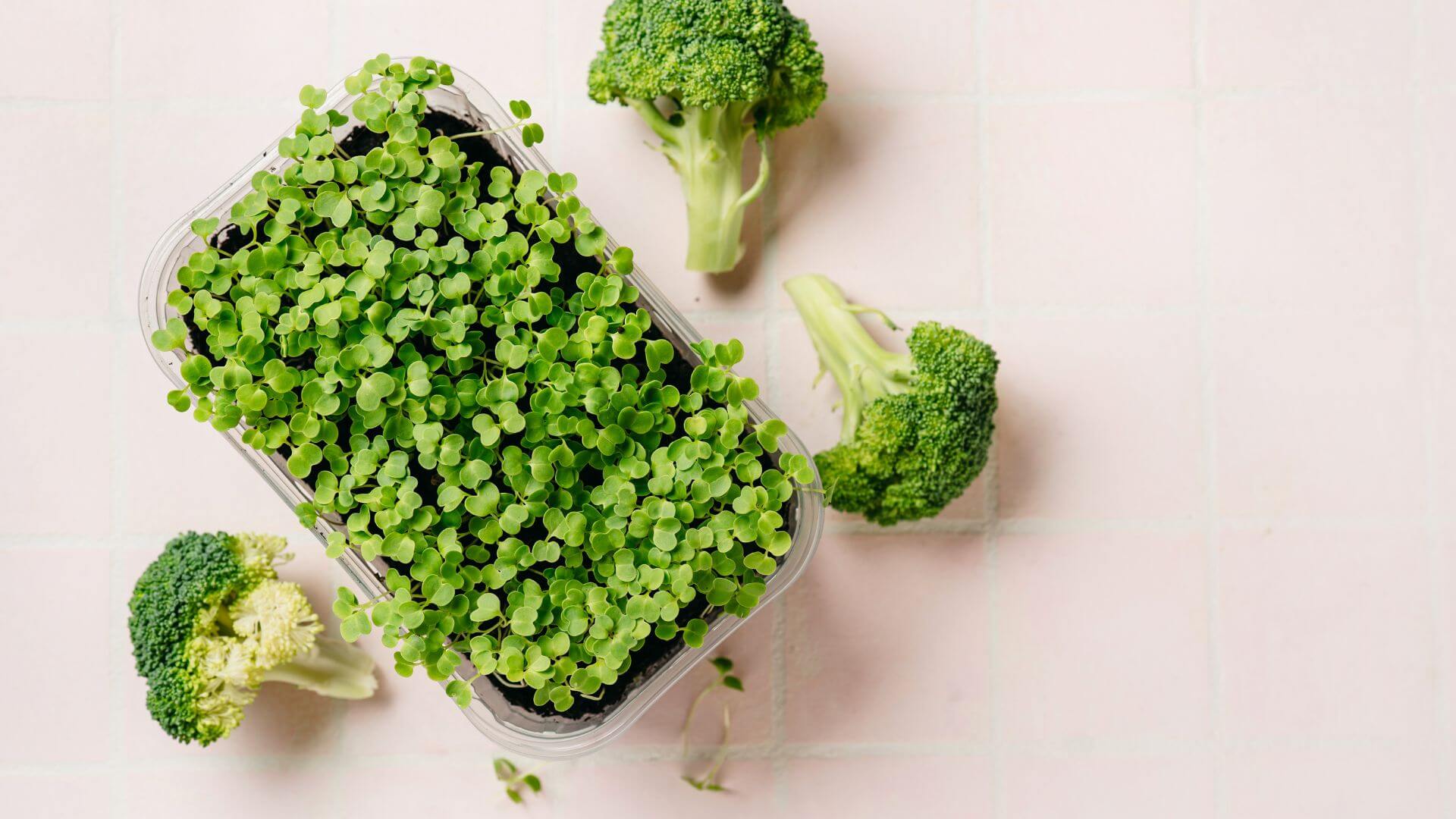Eating broccoli is good for you, but do you know why? The sulforaphane in broccoli is a significant reason it has so many health benefits, including anti-cancer benefits.
Today’s article will dive into sulforaphane, why you need it in your diet, and the best ways to consume it, including an unlikely source: cinnamon protein balls.
Keep reading to learn more about:
- What is sulforaphane?
- Health benefits of sulforaphane
- Foods high in sulforaphane
- How to incorporate more sulforaphane in your diet
What is Sulforaphane?
Sulforaphane is a sulfur-rich compound found in cruciferous vegetables, such as broccoli, brussels sprouts, and kale. Plants form sulforaphane when damaged to drive away insects.
Chopping and chewing cruciferous vegetables activates the necessary chemical reactions that increase sulforaphane levels.
Powerful Phytochemical
Sulforaphane is a powerful phytochemical (plant nutrient) with many human health benefits. Let’s explore some of the sulforaphane benefits next.
Benefits of Sulforaphane
Sulforaphane supports detoxification, balances oxidative stress, and boosts immunity. Researchers continue to study sulforaphane in many health conditions, such as cardiovascular disease and cancer.
Antioxidant and Anti-Inflammatory
Eating fruits and vegetables, including cruciferous vegetables, helps increase antioxidants to counteract free radicals. Sulforaphane is an antioxidant that stimulates the body’s production of even more antioxidants.
Inflammation is one of the root causes of chronic disease, and sulforaphane is a powerful anti-inflammatory compound.
Protects DNA from Dangerous Mutations
High levels of antioxidants in cells protect DNA and other cell structures from damage, which is vital for disease prevention, including cancer.
People who eat higher levels of vegetables, including cruciferous vegetables, tend to have lower rates of cancer, and one reason may be sulforaphane.
Slows Tumor Growth
Reducing inflammation and improving antioxidant status is important for cancer prevention and treatment, and the sulforaphane cancer connection goes further. Sulforaphane is supportive along with cancer treatments and may increase their efficacy. Of course, please discuss this with your doctor.
Anti-Cancer Properties
Another anti-cancer property of sulforaphane is its role in liver detoxification. Sulforaphane supports healthy estrogen detoxification. It shuttles estrogen down a more protective pathway vs. the pathways more associated with estrogen-positive cancers. This action may be beneficial for women with estrogen dominance or a higher risk for breast cancer.
Foods with Sulforaphane
There isn’t an established recommendation for how much sulforaphane per day is needed to achieve maximum benefits. While sulforaphane supplements contain higher doses, there are no risks from increasing food sources. Sulforaphane side effects are rare.
Cruciferous Vegetables
All cruciferous vegetables contain sulforaphane. Broccoli seeds and broccoli sprouts have the highest amounts.
Foods with sulforaphane include:
- Broccoli seeds
- Broccoli sprouts
- Broccoli
- Broccoli rabe
- Cauliflower
- Cabbage
- Brussels sprouts
- Turnips
- Radishes
- Rutabaga
- Daikon radish
- Kohlrabi
- Napa cabbage
- Purple cabbage
- Savoy cabbage
- Romanesco
Leafy Greens
Many leafy greens are in the cruciferous plant family and contain sulforaphane.
Leafy green sulforaphane foods include:
- Kale
- Collard greens
- Arugula
- Watercress
- Mustard greens
- Bok choy
Eat cruciferous vegetables raw or lightly steamed for the most sulforaphane benefits.
Sulforaphane for the Fall Season – Cinnabun Ball Recipe Packed with Nutrition
Scott’s Protein Balls aren’t just about protein. We source the highest-quality, most nutritious ingredients and formulate our recipes for flavor, texture, and health benefits.
Our new Cinnamon Bun Protein Balls are a delicious way to incorporate more sulforaphane and other nutritious compounds like cinnamon into your daily routine. To read more about the health benefits of cinnamon and cinnamon benefits for women, please read Why Cinnamon? The Power of Polyphenols in Breast Cancer Prevention.
Cinnabun Ball Ingredients
Cinnamon Bun Protein Balls are packed with healthy ingredients, including:
- Almond butter
- Allulose
- Pea protein
- Chia seeds
- Medium chain triglycerides
- Chicory root fiber
- Broccoli seed powder – our source of sulforaphane!
- Oat flour
- Flax seeds
- Coconut
- Cinnamon
- Vanilla
Bottom line: If you want to boost nutrition and incorporate more sulforaphane into your diet, choose cruciferous vegetables daily and snack on Cinnamon Bun Protein Balls!






